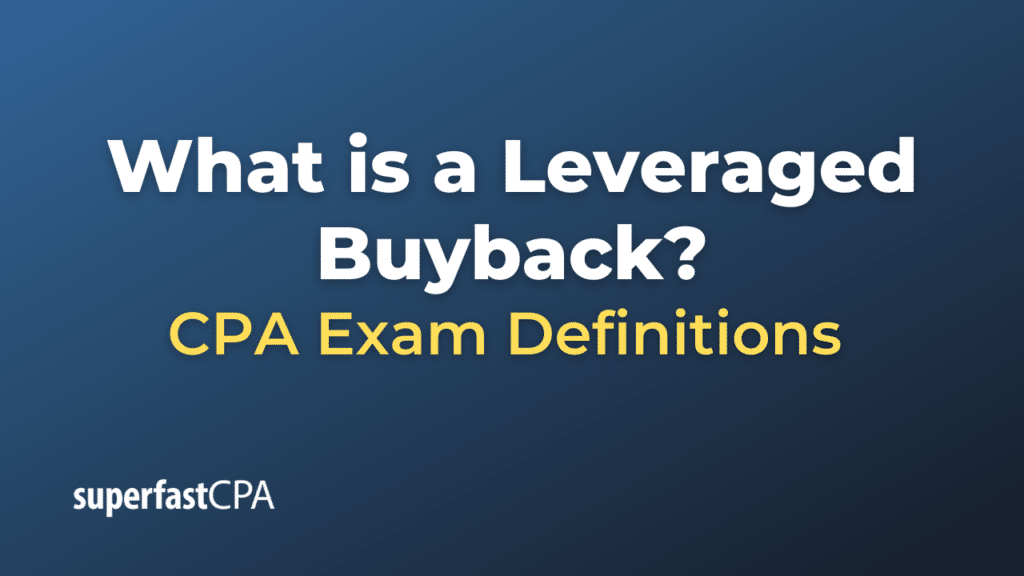Leveraged Buyback
A leveraged buyback, also known as a leveraged share repurchase, is when a company borrows money to repurchase its own shares from the open market. This is a type of financial leverage that a company might use to increase its earnings per share, return excess cash to shareholders, or protect against a takeover.
In a leveraged buyback, a company takes on debt and uses the borrowed funds to buy back its own shares. This reduces the number of shares outstanding, which can increase the earnings per share (EPS) and potentially boost the company’s stock price. In addition, interest payments on the debt are typically tax-deductible, which can lower the company’s overall tax burden.
However, a leveraged buyback also increases the company’s debt, which can lead to higher interest expenses and increase the company’s financial risk. If the company’s profits are not sufficient to cover the interest payments on the new debt, it could result in financial distress or even bankruptcy. Therefore, companies must carefully weigh the potential benefits and risks before deciding to undertake a leveraged buyback.
It’s also worth noting that the decision to engage in a leveraged buyback can send different signals to the market. Some investors might view it as a sign of confidence from the company’s management in the company’s future prospects, while others might view it as a signal that the company has no better investment opportunities for its cash.
Example of a Leveraged Buyback
Suppose Company ABC currently has 1,000,000 shares outstanding in the market, and its current earnings are $2,000,000. This results in earnings per share (EPS) of $2.00 ($2,000,000 earnings / 1,000,000 shares).
Now, let’s say that Company ABC decides to undertake a leveraged buyback. The company borrows $1,000,000 and uses this to buy back 200,000 of its own shares from the market at a price of $5 per share.
After the buyback, Company ABC has 800,000 shares outstanding (1,000,000 original shares – 200,000 shares bought back). If the company’s earnings remain at $2,000,000, the new EPS would be $2.50 ($2,000,000 earnings / 800,000 shares), representing a 25% increase in EPS due to the buyback.
However, Company ABC now also has an additional $1,000,000 in debt on its balance sheet, which it must pay interest on. Suppose the interest rate on this debt is 5%, resulting in an annual interest expense of $50,000. After deducting this interest expense, the company’s net earnings would be $1,950,000, leading to an EPS of $2.44 ($1,950,000 earnings / 800,000 shares). This is still higher than the original EPS of $2.00, but lower than the EPS calculated before taking the interest expense into account.
So, in this case, the leveraged buyback has resulted in an increase in EPS, but it has also increased the company’s financial risk due to the additional debt and interest expense. The company must therefore be confident in its ability to generate sufficient profits in the future to cover this increased financial risk.














